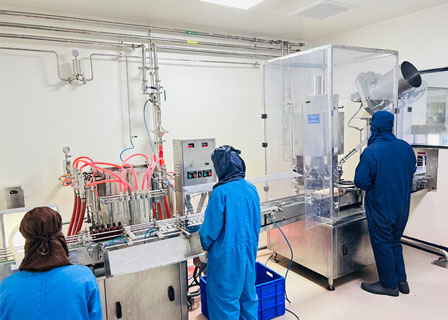Email at:info@greenwelllife.in
 In continuous manufacturing, raw materials and energy feed into the system at a constant rate, and at the same time, a continual extraction of output products is achieved. The process performance is heavily dependent on the stability of the material flowrate. For powder-based continuous processes, it is essential to feed powders consistently and accurately into the successive processes in the line, as feeding is characteristically the first step in manufacturing. Feeders are designed to achieve performance reliability, feed rate accuracy, and minimal interruptions.
In continuous manufacturing, raw materials and energy feed into the system at a constant rate, and at the same time, a continual extraction of output products is achieved. The process performance is heavily dependent on the stability of the material flowrate. For powder-based continuous processes, it is essential to feed powders consistently and accurately into the successive processes in the line, as feeding is characteristically the first step in manufacturing. Feeders are designed to achieve performance reliability, feed rate accuracy, and minimal interruptions.
With Greenwell Lifesciences manufacturing, a wide range of non-active ingredients may be blended with the active Greenwell Lifesciences ingredient or ingredients to create the final blend used for the solid dosage form. The range of materials that may be combined presents many variables that must be addressed. These variables include the particle size distribution, the particle form (spheres, rods, cubes, plates, etc.), the presence of moisture, particle surface properties such as roughness and cohesion, and powder flow properties.
During the manufacturing process, milling is often obligatory to reduce the average particle size in a drug powder. There are several reasons for this, including increasing homogeneity and dosage uniformity and increasing the solubility of the drug compound. Sometimes repeated powder blending followed by milling occurs to improve the manufacturability of the blends.
There are two general types of granulation: wet granulation and dry granulation. Granulation can be seen as the opposite of milling. Small particles are connected to form larger particles called granules. Granulation is used for several reasons. It prevents the "demixing" of components in the mixture, by creating a granule which contains all of the ingredients in their required proportions, which improves flow characteristics of powders and increases compaction properties for tablet formation.
Hot melt extrusion is used in Greenwell Lifesciences solid oral dose processing to enable the delivery of drugs with poor solubility and bioavailability. Hot melt extrusion has been shown to disperse poorly soluble drugs in a polymer carrier molecularly. The procedure encompasses the application of heat, pressure, and agitation to mix materials and 'extrude' them through a tool die. Twin-screw high shear extruders blend materials and break up particles at the same time. The resultant particles can be combined and compressed into tablets or filled into capsules.
Labs may use dry ice to cool drugs for reaction selectivity, but this cooling process becomes complicated if used at an industrial size. The cost of cooling a typical reactor to this temperature is high, and the viscosity of the reagent can increase as the temperature lowers, leading to difficult mixing. This causes the added expense of stirring harder and replacing parts more often, or it leads to a non-homogeneous reaction.